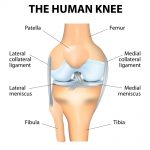What is Sciatica? Sciatica is a pain in the back, neck, or buttock that radiates to the leg or arm. Sciatica is also quite common and affects almost 40% of adults. It travels through the sciatic nerve, which starts in your lower back and extends to run down your leg. A proper diagnosis that confirms and best sciatica treatment is all that you need to lead a pain-free life. Sciatica pain 10 signs which confirm the diagnosis Before knowing about sciatica treatment, one needs to understand the nature of pain. The symptoms of sciatica are as follows: – Calf pain – pain that stretches down the lower leg and back of the knee. Lower back pain running down the leg. A pull sensation from your lower back to buttocks and thigh, that further extends from calf to the foot. A pain in your butt or leg that…
Read More



